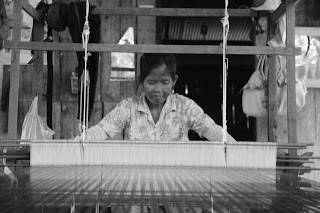I think that one of the most valuable experiences when we live abroad is that 'being outside' automatically puts us in the situation of 'continuous students', thus, our mind keeps opened and any conversation makes us learn a lot.
Recently, in one of our expat hangout sessions we've started talking about tipping and how that usually works in each country. In Brazil, our fake "optional" 10%, in the Netherlands 15%, in Cambodia they don't expect nothing but any amount would be gladly accepted, and in China it wouldn't be expected too but any amount would be offensive.
Our Chinese friend, Zhengyu, then explained about one episode he saw in his country some years ago. He was advising a Brazilian delegation there and one of them decided to buy a newspaper. The newspaper for sure cost less than US$0.10, but he had only big yuan bills (local Chinese currency), and the smaller one would be like US$10. Obviously, since the product was so cheap the lady who was selling it wouldn't have enough change. Then he had tried to give away as a 'tip' the full amount of the bill. That caused so big consternation in the lady, something unthinkable, that she had decided to give him the newspaper for free.
Zhengyu explained us that 'tipping' is socially seen as charity and that's very humiliating. Moreover, in case of a woman 'subject of' tipping, it would be seen as a suggestion for prostitution. According to him it's very common that out of the touristic areas leaving money on the table will make the waiter to call you back since you probably 'had forgotten'.
Well, as this discussion went through we've changed from tipping to begging. To beg is certainly humiliating position but it's culturally acceptable mostly worldwide. Here in Cambodia is common, but as much as common in Brazil in touristic areas and big cities. When I went to the US in 2010 I had the sensation that presence of beggars and homeless people in Chicago or NY were comparable or even larger than in 'comparable' areas of Sao Paulo.
 |
| Source: Thought Incarnate, ironically talking about begging |
I went to north Vietnam (Hanoi, Halong Bay and Tam Coc) in November of 2011. I saw only 1 beggar and no kids working on the street. Nothing. For sure you will tell me that Vietnam is not as poor as Cambodia. That's a fact, the GDP per capita in Cambodia is US$ 998 and in Vietnam US$ 3,331, BUT, in Brazil is US$ 11,845 (source: Wikipedia 'Southeast Asia' and Wikipedia 'List of Countries by GDP per capita'). At least, it's not a simple question of being poor or not. There are many cultural elements in the table. Vietnam, even calling for its own cultural identity was a Chinese province some 1,000 years ago. The cultural elements are not so different.
There's a book, that was a compulsory reading in college, called 'The Culture Code' of the French author Clotaire Rapaille. The book focuses on situations of developed countries, especially US and from Europe. There's a logic structure though that says that every people has its own symbols, beliefs, etc, that takes many influences and changes throughout the years but in somehow always keep its core. That core is taken from generation to generation and thus there is a 'key/code' that reveals and allows you to closely talk with each person. In other words, there's a reason why American are compulsive regarding big cars and have strict laws about sex and alcohol or why the French are so dependent of the Estate or why the Germans are so technical and procedural. Or, why begging in Cambodia and Brazil is socially accepted when in Vietnam and in China (and I'd extend that to countries that have strong Confuciunism culture) it puts people on an extremely humiliating position.
The individual behavior that we notice on the streets impacts and it's impacted by the common beliefs, symbols and values shared by a population. Even when just giving a tip, or alms, behind such action there's a much more complex symbology. It's worthy trying to understand it!
Liked it? Had any doubts? Would like to suggest something? Leave your comment! :)









